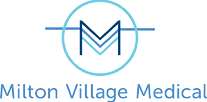Breast Cancer Risk and Screening - By Dr Jillian Gardner
- Milton Village Medical
- Feb 22, 2022
- 3 min read
Breast Cancer Risk and Screening
I have previously worked for both BreastScreen and a private breast screening service as a breast clinician managing women at increased risk of breast cancer, monitoring following breast cancer and investigation of breast symptoms. Therefore, I wanted to provide some information regarding breast cancer and breast cancer screening for our patients. Also I wanted to raise awareness regarding breast density so women are informed regarding this.
BREAST CANCER RISK
Breast cancer is the most common cancer among Australian women with one in every 7 women diagnosed in their lifetime. Risk factors for breast cancer include family history (although the majority of those diagnosed with breast cancer have no family history), increasing age, obesity, alcohol consumption, smoking and having dense breasts. There are some things that reduce your chance of breast cancer including regular exercise, breastfeeding and having a child before the age of 30. Survival rates from breast cancer have improved considerably (92% 5 year survival from diagnosis) in recent years due to screening and improved treatments. If you have a family history of breast cancer at a young age (<50), bilateral breast cancer, ovarian cancer or multiple family members affected by breast cancer it is important to speak to your GP for tailored breast cancer risk assessment.
SYMPTOMS
If you notice a new breast lump, change in the size and/or shape of your breast, nipple changes or discharge, skin changes or unusual pain it is important to see your doctor for examination and arrangement of further investigations which may involve a mammogram, ultrasound or other imaging such as MRI and a needle biopsy. It is important to see your doctor for assessment even if you have had a screening mammogram recently.
SCREENING
There is evidence that screening for breast cancer can detect cancer earlier and reduce chance of dying from breast cancer. The current recommendations is to offer breast cancer screening every second year from the age of 50 to 74 for women of general population risk. There is free breast cancer screening through BreastScreen Queensland which women can self refer to. Between the ages of 40-50 there is evidence that screening increases breast cancer diagnosis although there is an increased risk of finding benign breast conditions such as cysts and fibroadenomas that may require further investigation with imaging, needle biopsy which may cause significant stress and costs. Private breast cancer screening is also available through a number of specialised clinics and radiology companies. The advantage of this is these services provide a 3D mammogram (tomography) which is particularly helpful in women with dense breasts and may detect smaller lesions and often use other modalities such as ultrasound to confirm no issues. The downside is the time and cost involved.
BREAST DENSITY
Breast density and its role in breast cancer is an area of ongoing research. Breast density describes the relative amount of different types of breast tissue seen on a mammogram. Dense breasts have a relatively high amounts of glandular tissue and fibrous connective tissue and relatively low amounts of fatty breast tissue. It is a diagnosis that can only be made on mammogram and doesn’t relate to how a breast feels to examine. Increased breast density is associated with both and increased breast cancer risk as well as a reduction in sensitively of mammograms in detecting cancer. Very dense breasts (BIRADS category D) may require additional imaging (ultrasound or MRI) to reduce the chance of missing a breast cancer.
If you have any concerns regarding breast cancer risk, screening, investigation then it is important to make an appointment with your GP to discuss this further.
Written by: Dr Jillian Gardner





Comments